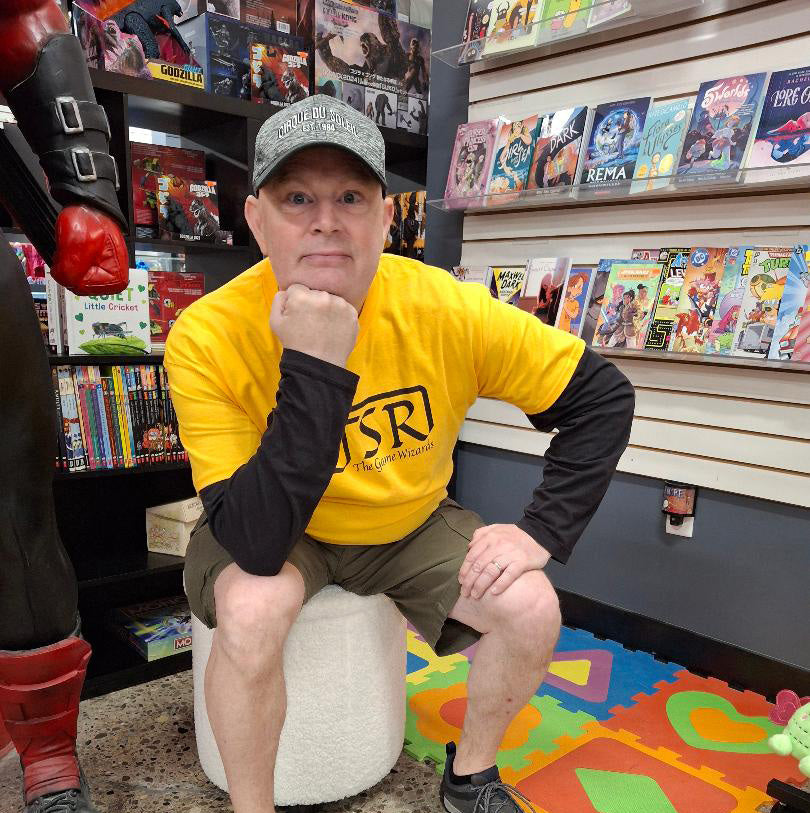Why Not AI Actors?
By Dan Brown One AI-generated actress tries to get an agent, and all of sudden Hollywood loses its mind. That’s what happened over the last couple weeks when the company behind Tilly Norwood, the AI performer, shopped its creation around Tinseltown to talent agencies in hopes of attracting representation – as reported in outlets like the Hollywood Reporter. Tilly buys iced coffee on the street. Tilly has money problems. And even though Tilly has an Instagram account like other celebrities, she’s not a real person. It’s a character, a program that could even be a useful tool in the hands of the right filmmaker. (Tilly also waves a lot, I think to show that her hands don't have any extra digits.) Among those speaking out against Norwood was SAG-AFTRA, the union that represents the human actors who appear in movies and on television in the U.S. “It has no life experience to draw from, no emotion and, from what we’ve seen, audiences aren’t interested in watching computer-generated content untethered from the human experience,” the union huffed in a statement, “It doesn’t solve any ‘problem’ — it creates the problem of using stolen performances to put actors out of work, jeopardizing performer livelihoods and devaluing human artistry.” Does this union know anything about movie history? At its most basic, Tilly Norwood is just the latest special effect in an industry whose trade is making unbelievable things look real. And computer-generated characters have been on our screens since at least the early 1990s, when George Lucas used them as background actors in The Young Indiana Jones Chronicles, paving the way for his Star Wars prequel trilogy. It’s funny, because when Lucas debuted the character Jar-Jar Binks in 1999’s The Phantom Menace, I remember a lot of griping about the Gungan by critics, but no one complained the alien was putting anybody out of work due to his being a CGI creation. Animation itself goes back several decades deeper into the past. Has SAG-AFTRA ever objected that Foghorn Leghorn was a danger to its members? As for the charge that Norwood was trained on the performances of human actors without compensation, that holds water. It’s also what flesh-and-blood performers have been doing since acting was invented. Did Christian Slater ever pay Jack Nicholson for being the basis of his character in the 1988 film Heathers? No, because there’s a time-honoured tradition that younger actors study classic performances – by Nicholson, Marlon Brando, Meryl Streep, Al Pacino, take your pick – and then swipe the mannerisms of their elders, incorporating them into their own work. No doubt the union heads are working on a way to outlaw that “theft,” too. Also, I hate to break it to SAG, but agreeing to represent an AI isn’t the sleaziest thing a Hollywood agent has ever done to make a buck. Me, I’m old school. I happen to believe no AI or CGI or any other character brought to life by means of technological trickery will ever be able to approximate what the best actors can do on the movie or TV screen, or on stage for that matter. From what I’ve seen so far, they won’t even be able to come close. But if audiences decide they want to watch Tilly Norwood over the real thing, who am I to say they’re wrong? Here’s a novel idea: Let’s let the market decide. Dan Brown has covered pop culture for more than 33 years as a journalist and also moderates L.A. Mood’s monthly graphic-novel group.
AI Doesn’t Even Have the Brainpower of a Lazy Journalist
By Dan Brown Journalists work hard. I know. I’ve had a long career as one. But in one recent instance, a newspaper reporter substituted artificial intelligence for basic journalism legwork, and did more damage than just disgracing himself. His error was so monumental, it affects all of us in the Fourth Estate. You may have heard about it. In May, the Chicago Sun-Times published a mea culpa after it published a list of 15 books to read this summer. This was part of its summer preview supplement. The problem: 10 of the books don’t exist. The writer who had been assigned the story, Marco Buscaglia, used a shortcut to generate the article. “Rather than a reported recommendation list, this one had been generated by an AI agent,” explained Melissa Bell, the head of the non-profit that owns the daily, in the apology to readers that followed. For some reason, neither Buscaglia nor the copy editors at the paper bothered to check the accuracy of the titles he was recommending. “The section was licensed from the third-party content provider King Features, a division of Hearst. The content wasn’t produced by Sun-Times journalists, nor was it reviewed by the newsroom prior to placement in the paper,” Bell added. Trust me when I say not one Chicago Sun-Times reader in 100 cares that the article wasn’t produced in-house. In my experience, the audience doesn't make a distinction between stories written by a newspaper’s own employees versus wire copy. So it is the Chicago Sun-Times that will take the full hit to its credibility. But it doesn’t stop there. This incident will tarnish all journalists. It gives more fodder to the media haters who want to discredit the work reporters, photographers, and editors do. Why is it in their interest to erode the image of journalists? So the public doesn’t listen to the media when it sounds the alarm. And there is an even more aggravating aspect to this incident. Do you know how much effort it would have taken that journo to generate a list of 15 books to read this summer? Not much. Trust me. If you’re not a journalist, let me break it down for you. You can trust me – I have made many such lists of events to attend, movies to watch, graphic novels to read, for publication in national, regional, city and campus papers. I hope my fellow journos don’t hate me for revealing these tricks of the trade, but in the grand scope of journalism this is not a tough assignment. First of all, any really good journalist is an avid reader. Given a reasonable bit of time, they would be able to generate 15 suggestions based just on the books they have recently read. Or you could consult publishers, who put out real books that deserve promoting. Or talk to a librarian or two. How about local book clubs? Or check the bestseller lists. Are you getting the picture? This is why this is more about journalistic laziness than technology. One writer decided it wasn’t worth even the minimal effort it would have taken to carry out his assignment. And now the rest of us have to pay the price. Dan Brown has covered pop culture for more than 32 years as a journalist and also moderates L.A. Mood’s monthly graphic-novel group.








